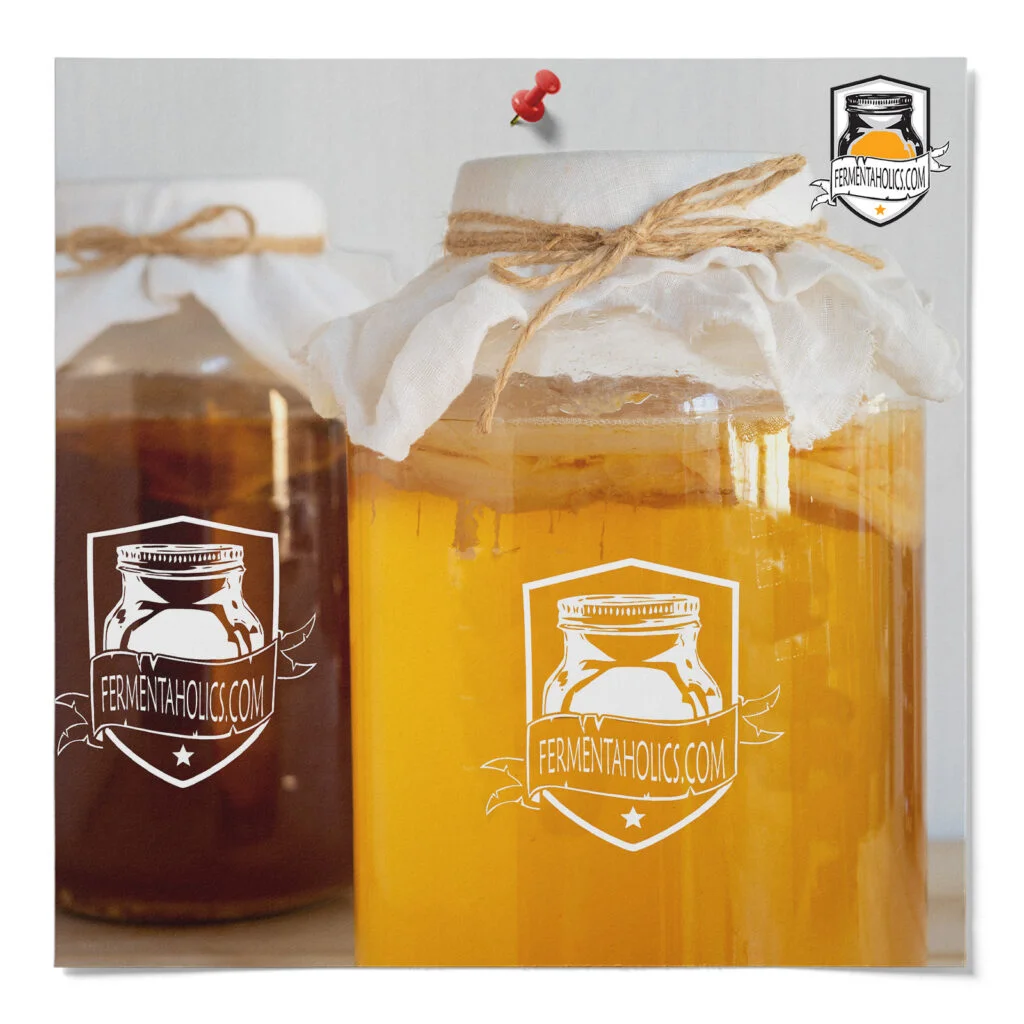
Wondering how kombucha is made? Well, it’s simple. You’ll need a few basic ingredients and supplies. Let’s jump right in; we’ll show you how to brew kombucha from start to finish!
The good news is brewing your own kombucha at home is easy. It not only saves you money, but it puts you in total control of your brew, which unlocks the unlimited flavoring world, allowing you to customize your kombucha with your favorite flavors, fruits, spices, and herbs. All you need to know is that if you can make sweet tea, you can brew kombucha.
In this article, we will go over exactly what you’ll need and how to get started brewing your kombucha at home. Let’s learn!

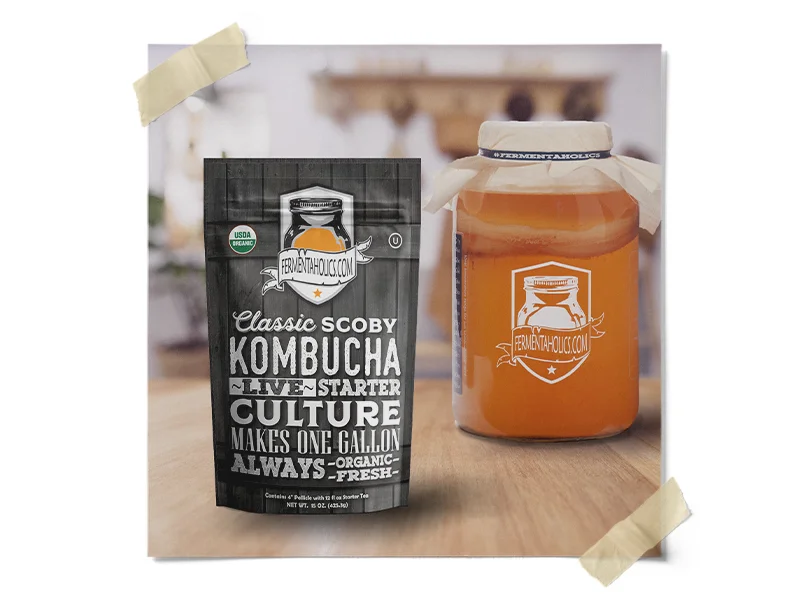
Kombucha, simply put, is fermented sweet tea. It is made by adding a kombucha culture to a batch of sweet tea and allowing it to ferment at room temperature. Fermenting the sweet tea transforms it into a massively flavorful, tart, effervescent, and healthy beverage that we know as kombucha.
The culture used to ferment kombucha is called a S.C.O.BY., an acronym that stands for Symbiotic Culture of Bacteria and Yeast. During the fermentation, the SCOBY converts sugar into alcohol, which further breaks down into vitamins & enzymes. The resulting beverage is packed with probiotics, vitamins, and enzymes, plus the added health benefits of the tea. For a deeper dive into the kombucha culture, check out our post here, What is a SCOBY?
This fizzy, tangy drink has been brewed for centuries as a health tonic or “elixir of life” and has been recently growing again in popularity. This recent spike can be attributed to the newest health craze: a healthy gut. Remarkable research is being done on our microbiome, revealing the importance of our gut health to the basic functioning of our body and our immune systems. Here, Harvard University calls the microbiome “…a supporting organ because it plays so many key roles in promoting the smooth daily operations of the human body.”
While store-bought kombucha is great, and there are many great choices on the shelves, regularly drinking kombucha at $3-$5 per bottle adds up quickly.
The good news is that you can easily make it at home for a fraction of the cost of store-bought. Check out this post on the cost of kombucha to see which option is best for you!
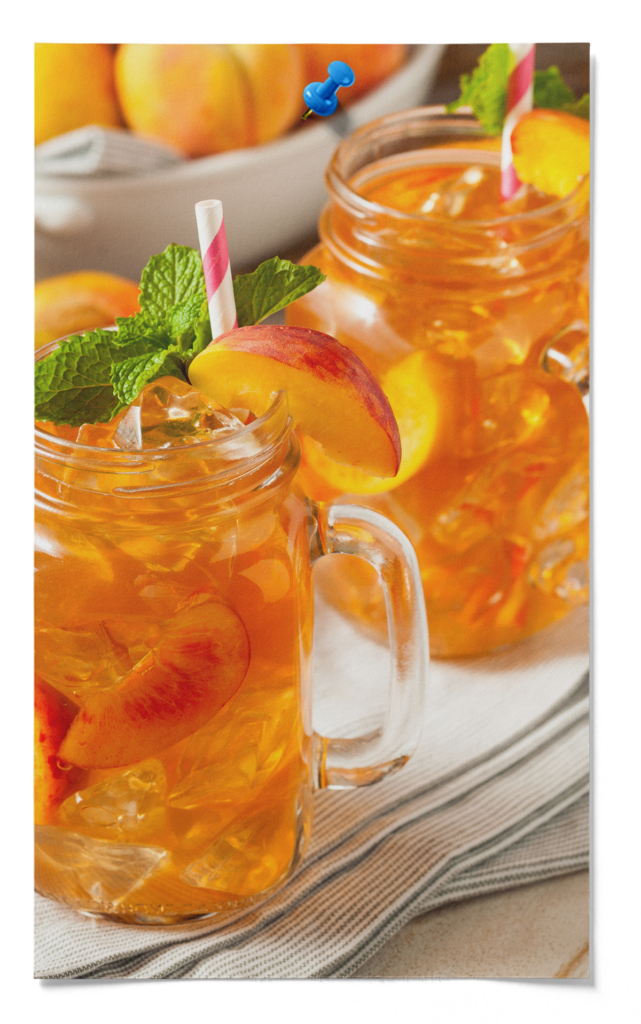
Brewing kombucha is almost always a two-step process. Brewing kombucha is only a one-step process for those who prefer still kombucha. Otherwise, the steps consist of primary fermentation and secondary fermentation. The primary fermentation is when you make kombucha, and the secondary fermentation is when you take the kombucha and bottle, flavor, and carbonate.
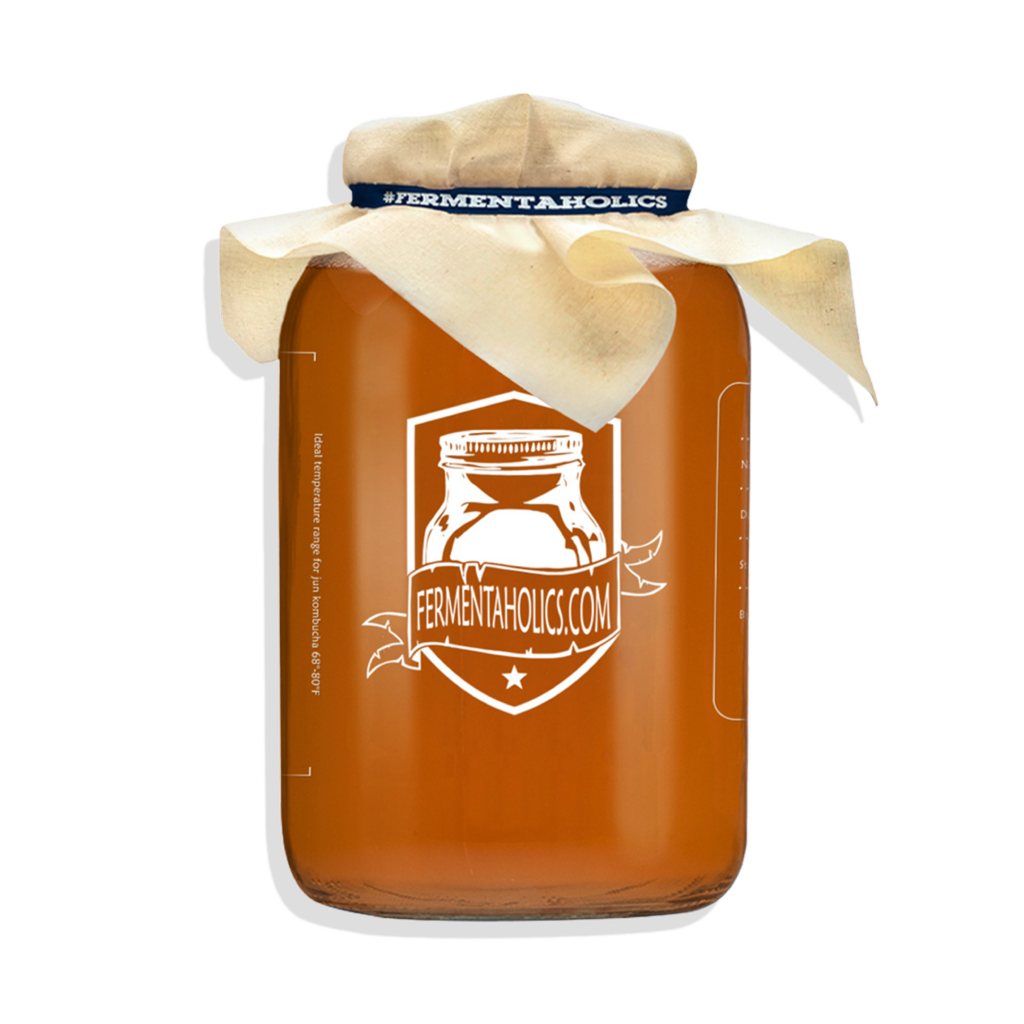
The primary fermentation is the first step of the kombucha brewing process. This is where your SCOBY transforms the sugar in the sweet tea into the tart and slightly sweet kombucha we love. At the end of this stage, you will have kombucha but it will be unflavored and flat.
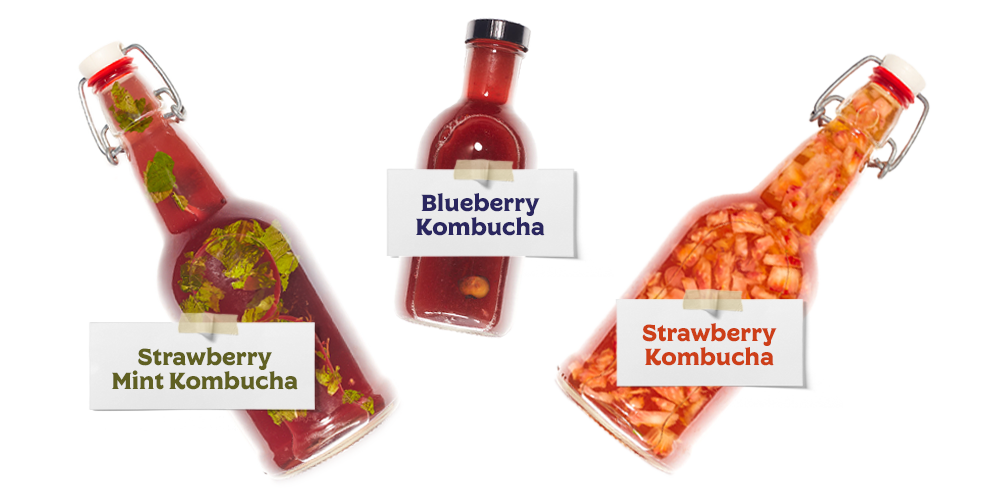
This is the step where you bottle your kombucha. In addition, this is where you carbonate and/or flavor your kombucha by the addition of sugar and flavors. This step involves adding a bit of sugar or flavor to bottles with lids designed to hold the pressure of fermentation and then letting them ferment a little longer, allowing the yeast to carbonate the beverage in an airtight environment naturally. Have questions on the process? See our guide on kombucha secondary fermentation here.
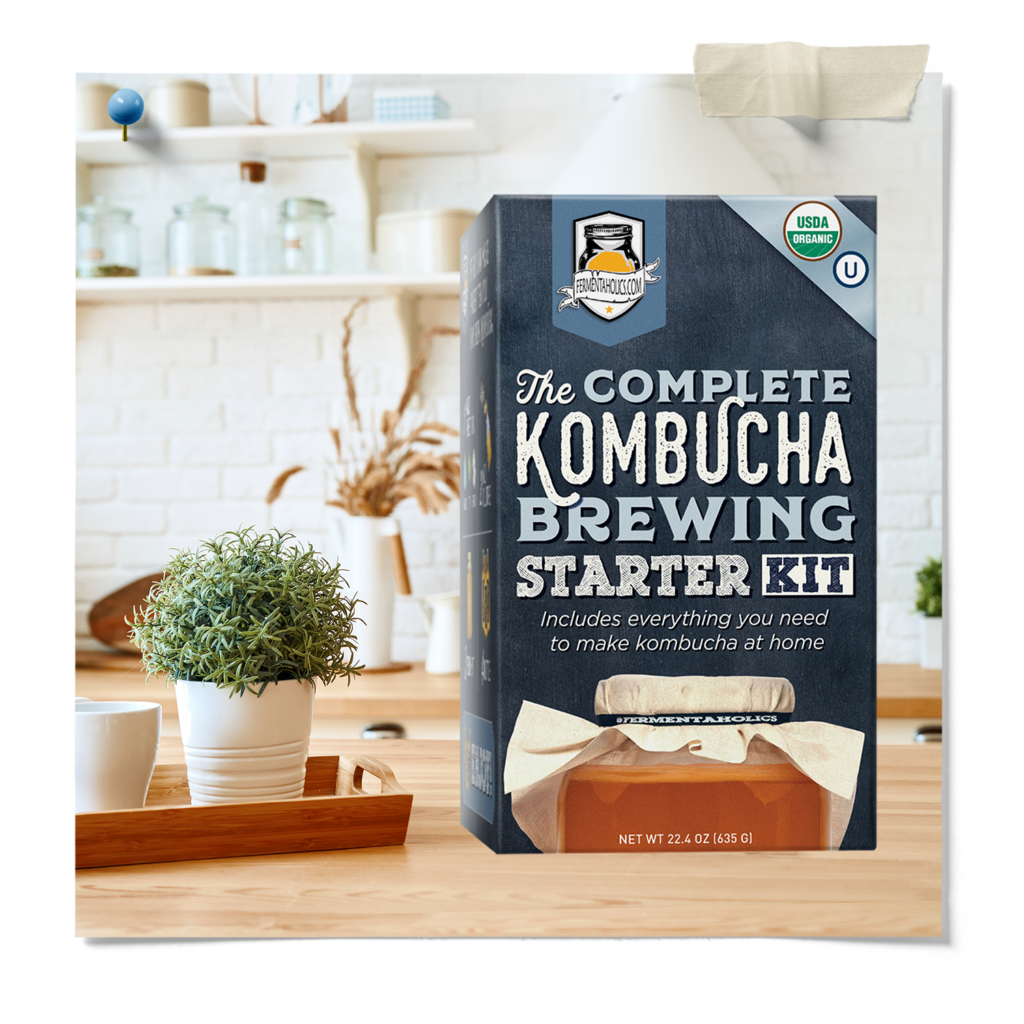
Making kombucha is easy—if you can make sweet tea, then you can brew kombucha. If you’re eager to get started but not sure where to begin, you should definitely consider our Complete Kombucha Making Kit. This kit includes everything you need to get started in one shot. Otherwise, let’s go over what you need to start making kombucha item by item.
1
Kombucha Brewing Jar : Glass or lead-free porcelain are popular options for home brewing. Choose anything non-porous and non-reactive. See this post to help determine what is the best container for brewing kombucha.
2
Muslin Cloth: During fermentation, kombucha needs plenty of airflow but also requires a cover to keep pests out. When choosing the right cover for your kombucha brew, muslin covers are the best way to go, as they allow maximum airflow while keeping any fruit flies at bay. However, even a coffee filter with a rubber band works here.
3
Kombucha Culture | SCOBY (Symbiotic Culture of Bacteria and Yeast): The SCOBY is the group of living microbes responsible for transforming sweet tea into kombucha. They reside in previously brewed kombucha as well as in the cellulose film that grows on the surface. If you’re looking for a SCOBY, you can purchase an organic SCOBY from us, here!
Organic Sugar: Without sugar, there wouldn’t be any fermentation taking place. The yeast eats sugar, breaking it down into carbon dioxide and alcohol, which then gets broken down by the bacteria into healthy organic acids, enzymes, and vitamins. Since you’re saving so much money making your kombucha, I recommend purchasing organic ingredients. Read more about what kind of sugar to use in our post here which will help you determine what is the best sugar for brewing kombucha.
Organic Tea: Tea provides the SCOBY with nutrients that help facilitate the fermentation. It’s traditional to use black tea, which has high tannin and nutrient count, however, you can experiment with all types of different teas. Check out our hand-blended, organic kombucha tea blends specifically formulated for brewing kombucha, here!
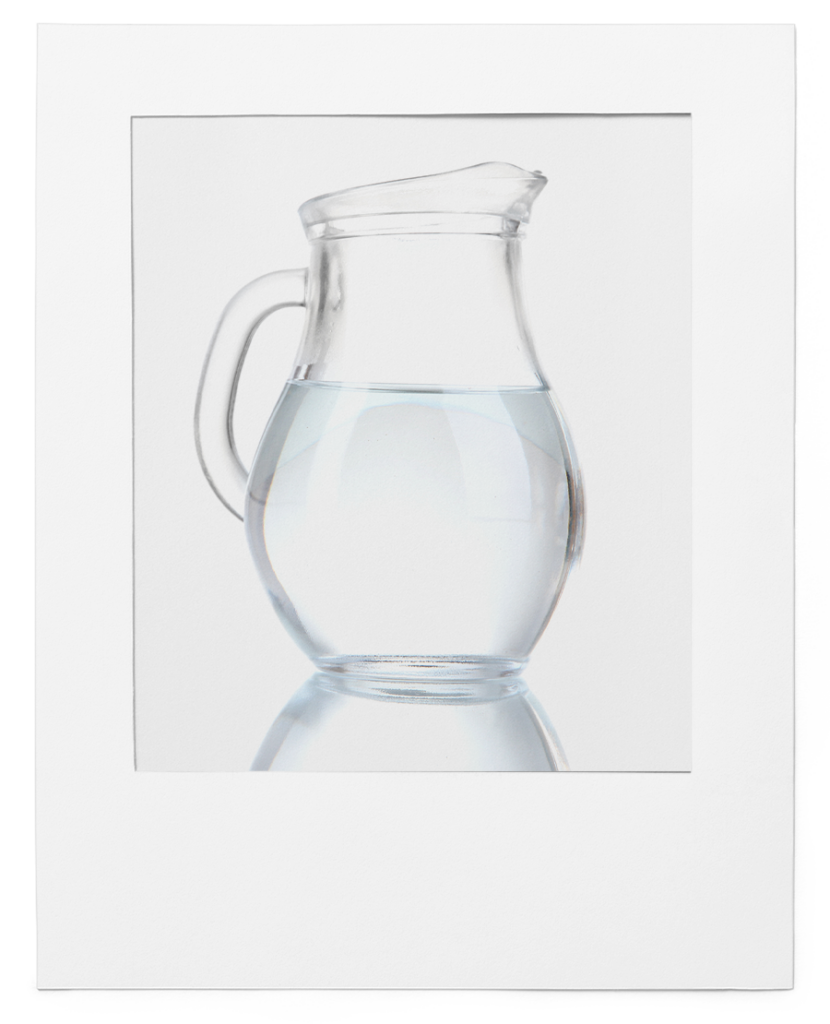
6
Filtered Water: As the most abundant ingredient in kombucha, you want to make sure that the water you use is high quality. Tap water contains chlorine and chloramines that inhibit microbe growth (not good for fermentation). Questions on water sources? See our post on brewing kombucha with tap water.
pH Strips: Testing the pH at the start of your kombucha brew is essential. Testing the pH tells us that our kombucha is brewing safely in the proper pH range, with a starting aim at 4.5 or below. Also, we can monitor the brew as it ferments and track its progress as the pH lowers. Finished kombucha, depending on preference, will have a pH anywhere from 2.5 – 3.5.
Temperature Strip: Attach an adhesive temperature strip to the side of your brewing vessel. These temperature strips allow you to monitor the temperature of your kombucha brew, so you know if your batch is being kept at the proper temperature.
1
Gallon Batch30
minutes7 - 21
DaysKombucha Primary Fermentation One Gallon Kombucha Recipe
1-Gallon Kombucha Brewing Jar, Small Pot, Breathable Kombucha Cloth Cover, And A Rubber Band.
1 Gallon Filtered Water*
1 Cup Organic Cane Sugar
2 Tablespoons Loose Leaf Black Or Green Tea Or 6 Tea Bags
Kombucha SCOBY– 1.5 Cups Kombucha Starter Tea + SCOBY Pellicle
Thermometer Or Adhesive Temperature Strip
Funnel
Kombucha Bottles – Pressure Holding, Airtight Bottles For The Secondary Fermentation, And Storing Your Finished Brew.
In a small pot, bring 2 cups of water to a boil – turn off and remove from heat.
Place tea in the pot. If you’re using loose-leaf, you can use a tea ball to make removal easier.
Allow the tea to steep for 5-10 minutes, then remove from the pot.
Add the sugar and stir until it’s fully dissolved.
Pour the contents of the pot into the gallon brew jar.
Top the jar off with cool filtered water, making sure to leave room for your culture plus a little breathing room about 3 inches. Before you move on to the next step, the temperature of the tea should be below 85F.
Gently stir in your kombucha starter culture (kombucha SCOBY)
Using a spoon, remove a small amount of liquid from the brew jar to test the pH. If the pH reads 4.5 or below, continue to step 11. If the pH reads above 4.5, slowly add distilled white vinegar (never raw vinegar) and test until it reaches that point.
Secure the opening with a breathable cloth or coffee filter over the opening of the jar with a rubber band. This is important to keep bugs out and allow your ferment to breathe.
Place your brew jar undisturbed in a warm spot, out of direct sunlight for 7-21 days, brewing time depends on temperature.
After 7 days in the desired temperature range [75-85°F], it’s time to start taste testing. It should only be slightly sweet. If it tastes overly sweet, then it needs more time to ferment. Cover and check back daily until it reaches a balance of slightly sweet, slightly tart
When you’ve finished your primary fermentation, it’s time to move to the secondary fermentation. The secondary fermentation is where you flavor and carbonate your kombucha in air tight bottles.
Ready to bottle? Hop over to our post on how to bottle kombucha to learn how to do a secondary fermentation!
